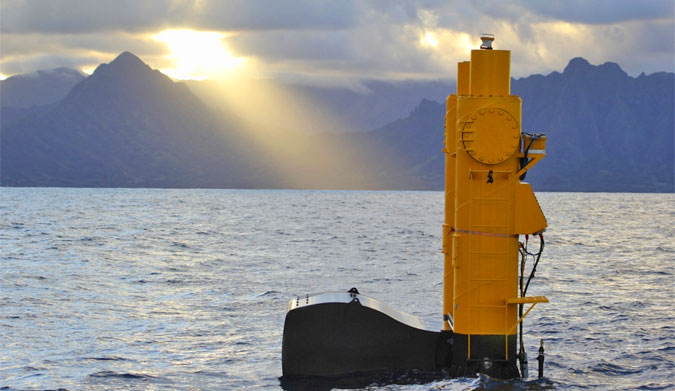We’ve all heard of solar and wind technologies that harness energy to create electricity. Now, with support from the United States Navy and the Energy Department, researchers at Northwest Energy Innovations have created a device that generates electricity from the motion of the choppy, bobbing, back-and-forth surges and motions of the ocean. The power of the wave forces the key “float” feature to rotate, powering a generator and supplying electricity to the grid via an underwater power cable. When you consider the ocean covers roughly 70 percent of the earth’s surface, you may ask yourself, “Why didn’t something like this come sooner?” The fact of the matter is that this promising technology is here, and we couldn’t be more excited.
The wave energy prototype has successfully moved forward from a concept to a grid-connected, open-sea device operating in a 30-meter test berth at the Navy’s Wave Energy test site in Kaneohe Bay in Oahu. The device, called Azura, is giving experts the chance to monitor and evaluate the long-term performance of the nation’s first grid-connected wave energy converter instrument. Although still in its early stages of development, recent data has suggests the potential value in the commercialization of such a technology.
The project supports the Energy Department’s mission to research, test, and develop innovative technologies capable of generating renewable, environmentally responsible, and cost-effective electricity from clean energy resources, including water. Marine and hydrokinetic (MHK) technologies, which generate power from waves, tides, or currents, are at an early but promising stage of development. Many coastal areas in the United States have strong wave and tidal resources, and more than 50 percent of the U.S. population lives within 50 miles of a coastline, making transmission from these resources more economical. With further progress towards commercialization, MHK technologies could make substantial contributions to our nation’s electricity needs. To accelerate commercialization of wave energy devices, the Energy Department funds research and development—from laboratory and field-testing of individual components, up to demonstration and deployment of complete utility-scale systems.
If successful, this advancement will not only be a major feat in proving wave energy as a viable source for our nation’s clean energy, but it will potentially be a giant leap in achieving a sustainable future. The Department of Energy suggests that the United States could theoretically generate one third of its power needs using wave energy. Depending on their findings, this could significantly undermine the construction of dams, nuclear power plants, and other means of electricity-generating infrastructure that has proved to be environmentally destructive. Not to mention, the power of the ocean is endless.


